Before I tell you about my experiences at three-month-old ArkCleoRich African Kitchen, I want you to hear directly from restaurant ambassador Richard Amoah, husband of store owner Rukaya Amoah. After my first visit, I asked him to record a short video with me to introduce first-time West African food eaters to the cuisine. Give it a watch and he’ll walk you through several recommended dishes as well as popular side items, outlining ingredients as well as the story behind the outfit’s name.
Now to an important detail that will help you locate ArkCleoRich: The sign at 1371 N. Academy Blvd. overhead the entryway reads Pho Viet Bistro Seafood, not ArkCleoRich. Only the lettering in the lower windows indicates anything about African food. At first, I thought ArkCleoRich might be something like a popup or ghost kitchen. Not the case.
It turns out it’s an overly complicated arrangement between the Amoahs and the former Vietnamese restaurant’s operator and the spot’s landlord. Something about the sublease is currently preventing the Amoahs from fully rebranding the spot if I understand correctly. Once you’re inside, though, the tidy space has almost fully become an African eatery. That’s if you ignore common pho condiments at the table like soy and hoisin sauces and sriracha, which at no point during our meals would I have thought to reach for. (They should probably just ditch those so as not to confuse.)

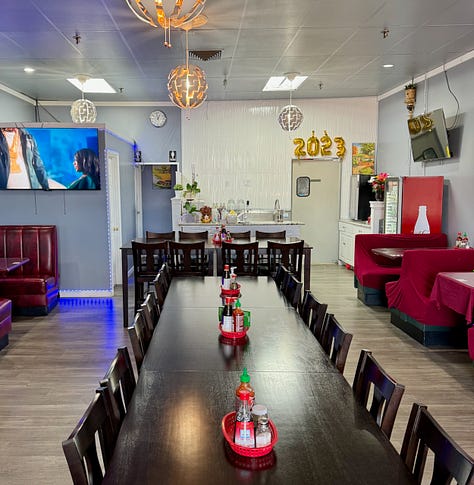
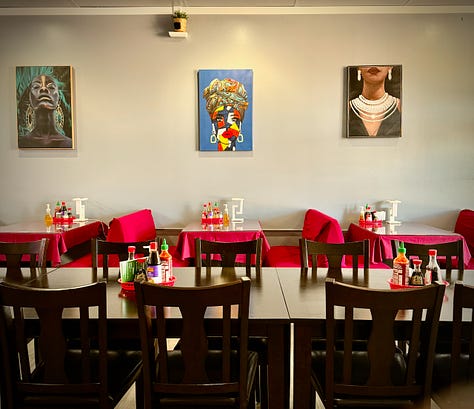
Anyway, in talking with Richard I also learned that he’s a former hydroelectric dam engineer who has a business administration degree as well. He and Rukaya have four children (as you heard in the video, explaining the name) and are living here because Richard holds a finance management job at Fort Carson; he’s E7 active duty in the military. He tells me the restaurant is Rukaya’s dream, and he helps out onsite when he’s able to. I do meet and speak with her briefly, but she’s too busy as the sole cook to chat long, leaving the customer relations to her husband on my visits.
I’m able to sample around a quarter of the menu between my two stop-ins. Richard proves helpful in answering all my questions and guiding us through how exactly to eat big bowls of stew with our hands. Admittedly I find it more difficult and messy than eating with strips of injera bread at Uchenna Ethiopian cuisine locally — my other local touchpoint to the continent. But Richard brings us a large bowl of warm water into which we dip our fingers and rinse as needed. You’ll see: Fufu — defines the word “sticky.”
The blended cassava and plantain becomes doughy, bao bun fluffy and incredibly starchy, clinging to skin when pinched. As Richard explains in the video, fufu’s virtually tasteless on its own but acts as a vehicle for soaking up soups that are inherent to the region’s cuisine. The different variations, like banku (with corn) and konkonte (dried cassava flour) offer similar experiences overall when it comes to dunking and eating sans chewing. (They’re called swallow foods.)
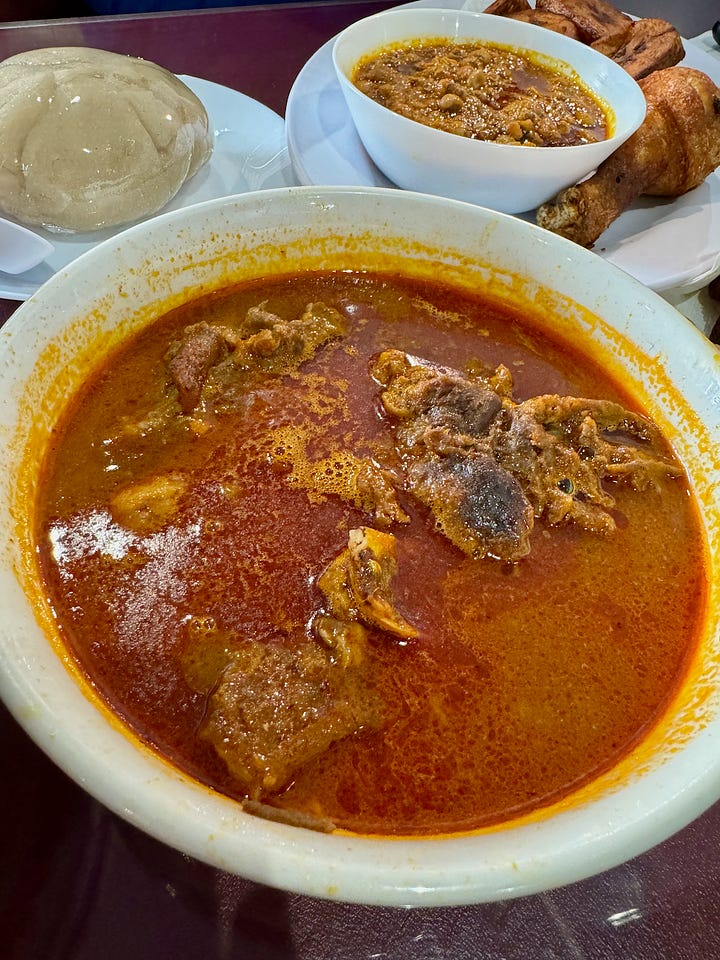
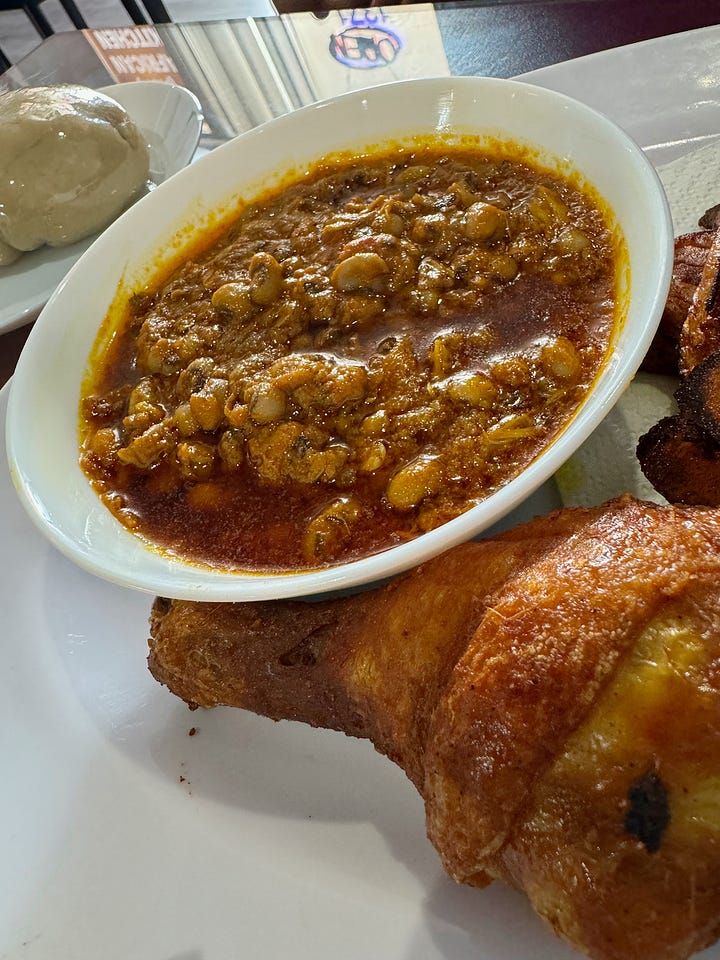
My guest goes for the fried plantain and beans (black eyed pea) stew, which is hearty enough on its own but comes with a chicken drumstick — simple, a little salty and crispy skinned, not heavily breaded. The African seasonings Richard refers to in the video aren’t spicy despite the broth colors. My groundnut (peanut) soup holds a strong goat meat essence, a little gamey and tangy, and is oily like a bone broth. Don’t think sweeter Asian renditions of peanut soup, like in the Thai pantry; this is wholly savory, deep and rich.
If you’re a fan of goat, start with the kebabs, which are small strips of both fatty and lean-chewy meat attached to rib bones — baked then fried, served with sharp raw onions and a dusting of Ghanaian suya spice. The kebab seasoning tastes similar to Ethiopian berbere, with a touch of floral aroma.
But if you’re looking for more approachable dishes on a first try, take Richard’s advice and go for one of the rice plates. On my second visit, we order both the Jollof Rice with chicken and Waakye with shito and gari. They’re both excellent. The Jollof has a Mexican rice color due to the tomatoes in it, but heads its own directly flavor wise, influenced by ginger and garlic. It’s great with bites of the simple fried chicken and even better when you pour the provided Jollof rice sauce over it. That holds a piquant flavor, tart from tomato paste and spiked by earthy peppers.
The Waakye (pronounced WAH-chay) is our favorite though. The black eyed pea rice picks up the red color from sobolo leaves, which are a West African variant of hibiscus, also used to make drinks which have purported health benefits. You can’t see it in the photo below, but under the spaghetti there’s a coarse powder of yucca flour (the gari) that’s similar to Brazilian farofa if you’re familiar with that. It doesn’t hold a lot of flavor but it contributes a crunchy texture that’s desirable like seeds in a salad. The best part of ArkCleoRich’s presentation of the dish are the side sauces: the shito and Waakye sauce. The shito’s made with dried herring for a pungent pop and the pastier Waakye sauce as Richard calls it leads with an acidic sun dried tomato tartness as an evolution of the Jollof sauce.
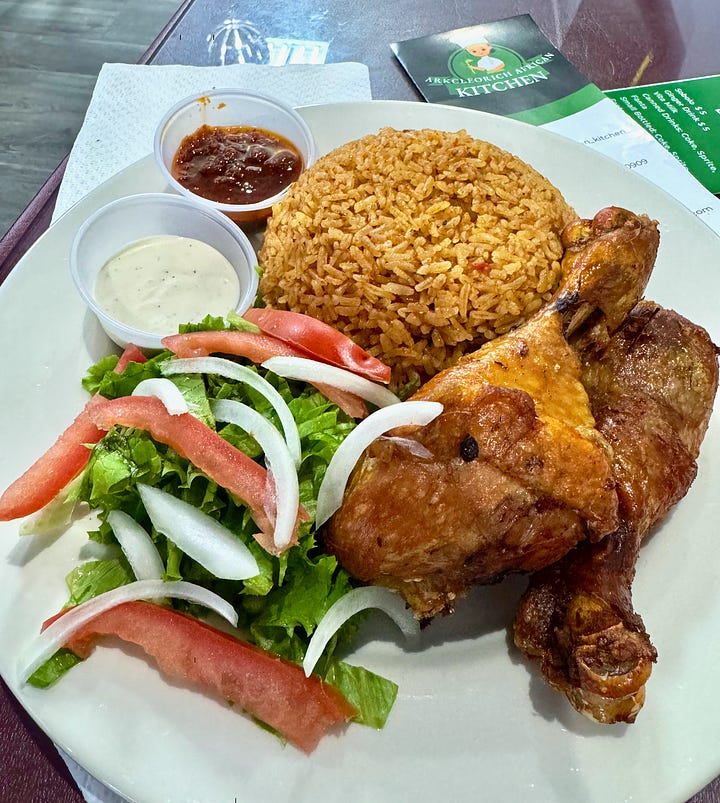
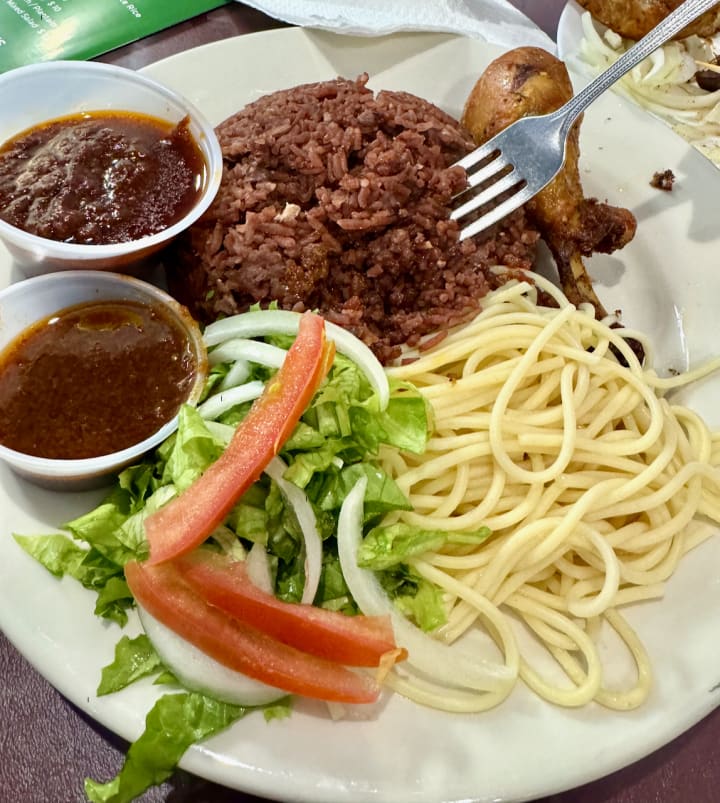
Last, we try the grilled tilapia with fried yam. Richard says they do tilapia differently than other countries due to African spices utilized plus ginger and garlic. They top it with fresh onions and tomatoes are serve it with two respectably spicy chile sauces, not a far cry from familiar salsas. You’ve got to carefully and patiently pick the meat from the bones throughout the whole fish, and we dig out all the good bits from the head, too. It’s delicious with the sauces and the starchy yams are basically like Peruvian yucca fries.
Much like at Uchenna, be prepared to wait a bit for food to arrive, as everything is cooked fresh to order. “It’s worth the wait and money” Richard insists. I don’t disagree.
As for drinks, there’s a cooler with random imported sodas and sweet drinks, including some coconut water and Vita Milk. It doesn’t quite align with what you see on ArkCleoRich’s website, and when she’s able to Rukaya also makes special ginger and sobolo drinks. Neither is in stock during our visits.
Despite the few clunky elements, like the outdated signage out front and unavailable menu items, ArkCleoRich shines where it matters: with its food flavors and culinary authenticity. It’s lovely to see West African representation and something unique in town which has the potential to introduce so many eaters to something new to them. I learned a lot during my visits and subsequent research and I was thrilled to try dishes like the Waakye that I’d never had before.
Plus I’m always up for an excuse to eat with my hands, especially when its encouraged by a cultural norm.

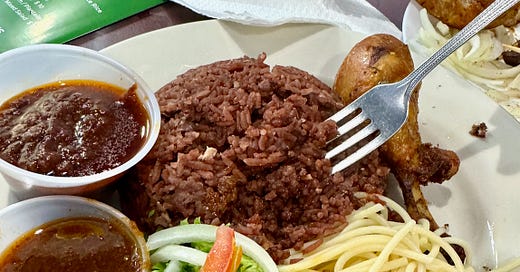

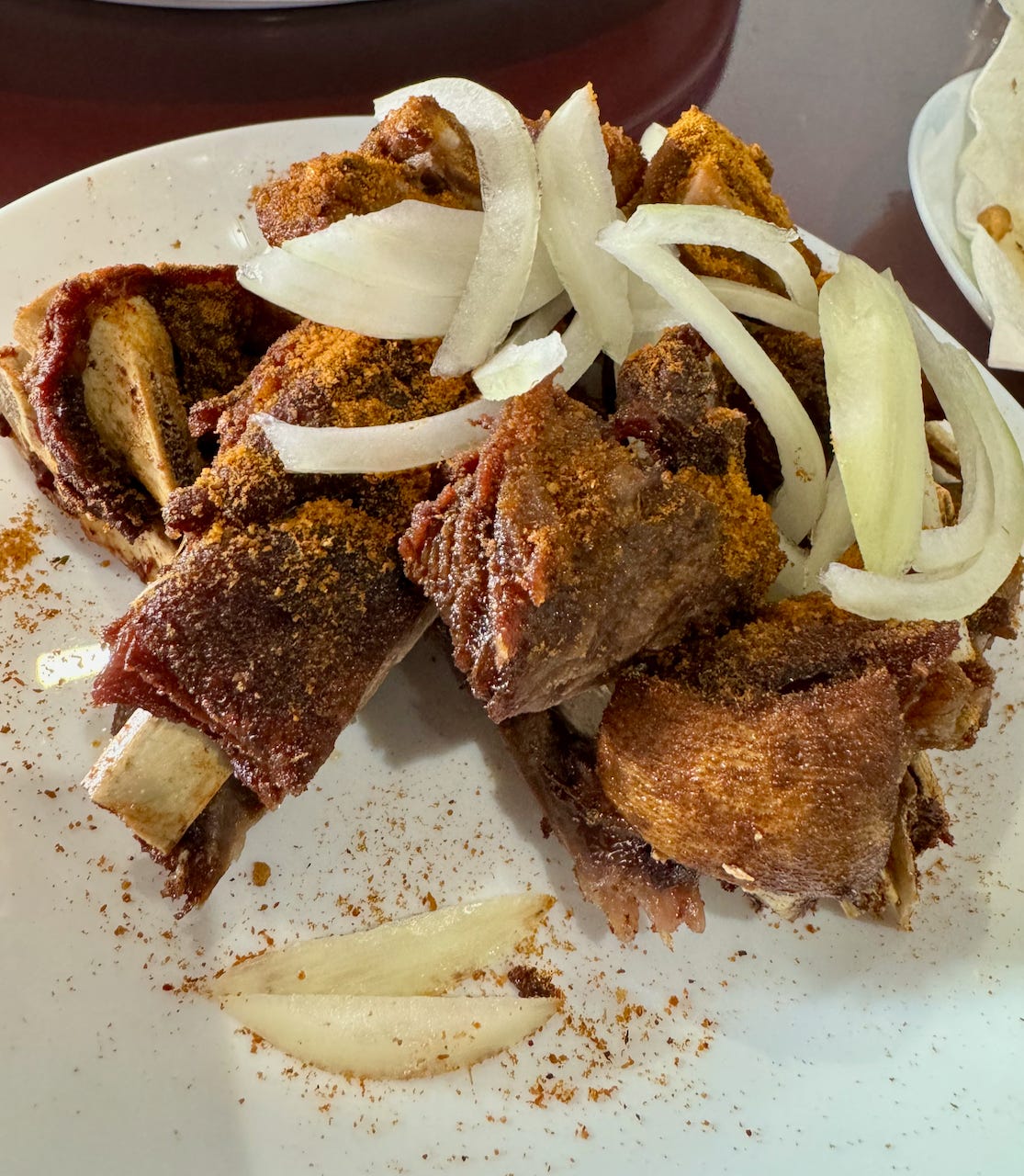

Thank you for reviewing ArkCleoRich African Kitchen! Now I know the answer to "what's for dinner?". I enjoyed their flavor-rich food when it was offered from their home-based kitchen. I'm happy to learn of their new location and am excited to see them grow and reach new customers.
Your writing is just fantastic! I can’t wait to try this place on our next visit to the Springs. Happy new year!